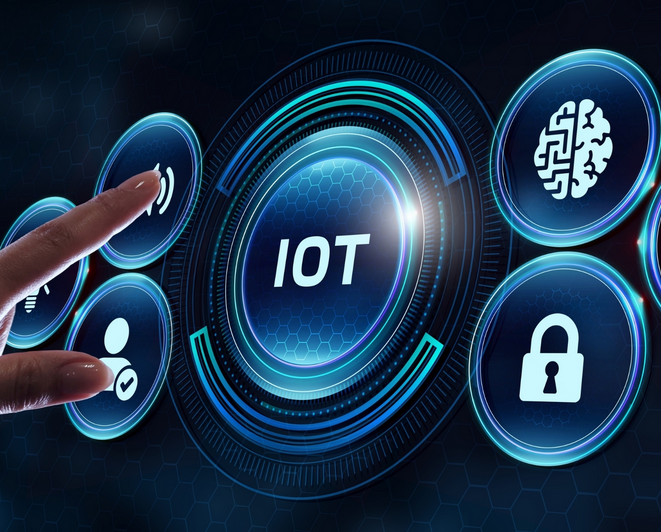Integrating IoT with Mobile Payment Solutions

The Internet of Things (IoT) is transforming industries by connecting everyday devices to the internet, allowing them to collect and exchange data. When integrated with mobile payment solutions, IoT has the potential to redefine how consumers make transactions, enabling more seamless, automated, and personalized payment experiences. From smart homes to wearable devices and connected cars, IoT is paving the way for a future where payments are effortless and integrated into daily life. Here’s how IoT is being integrated with mobile payment solutions and what it means for consumers and businesses.
1. IoT-Enabled Payments via Wearables
One of the most exciting integrations of IoT with mobile payment solutions is through wearable devices, such as smartwatches and fitness trackers. These devices are becoming increasingly capable of processing contactless payments, allowing users to make transactions simply by tapping their wrist. By linking these wearables to mobile payment solutions like Apple Pay, Google Pay, or Samsung Pay, users can make quick and secure payments without needing their smartphone or physical card.
Why it matters:
- Convenience: Wearables make payments more accessible, especially for quick, small transactions.
- Hands-free payments: It offers a seamless experience for users on the go, without needing to pull out a wallet or phone.
2. Smart Homes and Automatic Payments
IoT devices in smart homes are another area where IoT is enhancing mobile payment solutions. Devices like smart refrigerators, voice assistants, and smart thermostats can be linked to mobile payment systems, allowing for automated purchases. For instance, a smart fridge could automatically reorder groceries when supplies run low, and the payment could be processed through a linked mobile payment app. Similarly, voice assistants like Amazon Alexa or Google Assistant can facilitate payments by simply using voice commands.
Why it matters:
- Automated transactions: IoT makes it possible for users to set up automatic purchases, reducing the hassle of manually making payments.
- Effortless experience: By integrating payment systems with daily activities, users save time and effort while staying on top of regular purchases.
3. IoT and Connected Vehicles
Connected cars are another significant player in the IoT and mobile payment ecosystem. With IoT-enabled vehicles, drivers can make in-car payments for services like fuel, parking, or even tolls without needing to take out a wallet or smartphone. The car’s payment system can be integrated with a mobile wallet, allowing for a seamless and secure transaction directly through the vehicle’s dashboard.
Why it matters:
- Streamlined payments: Drivers can make payments while staying focused on the road, which enhances convenience and reduces distractions.
- Smart payments: IoT-enabled vehicles can automatically identify payment needs and process them in real-time.
4. Enhanced Security Features
Integrating IoT with mobile payment solutions also brings a new level of security to transactions. With multi-factor authentication (MFA) and biometric verification, such as fingerprints or facial recognition, IoT devices can ensure secure transactions while maintaining convenience. For example, smart wearables and phones equipped with IoT sensors can use these authentication methods to verify identity before processing payments, reducing fraud risks.
Why it matters:
- Safety: IoT-enhanced security features ensure that users’ payment data is protected during transactions.
- Trust: Stronger security measures help build consumer confidence in using IoT-enabled mobile payment systems.
5. Personalized Customer Experiences
IoT devices collect vast amounts of data about user preferences and behaviors. By integrating this data with mobile payment systems, businesses can offer personalized payment experiences. For instance, a retail store might send a customized discount to your smartphone or smartwatch based on your previous purchases, or a coffee shop might offer loyalty rewards when you approach with your mobile device. These personalized experiences encourage customer engagement and increase conversion rates.
Why it matters:
- Tailored experiences: IoT allows businesses to offer personalized services, which can lead to increased customer loyalty and sales.
- Customer satisfaction: Providing customized offers based on customer preferences enhances the overall shopping experience.
Conclusion
Integrating IoT with mobile payment solutions creates new opportunities for convenience, efficiency, and personalization in the digital payment ecosystem. Whether it’s through wearables, smart homes, connected cars, or enhanced security, IoT is revolutionizing how we make and manage payments. As technology continues to evolve, we can expect even more innovative applications of IoT in the mobile payment space, further streamlining transactions and improving user experiences.
#IoT #MobilePayments #SmartDevices #ContactlessPayments #DigitalPayments #PaymentSolutions #TechInnovation #ConnectedCars #WearableTech #SmartHomes

